In the dynamic data management landscape, where every decision is heavily influenced by the quality and accessibility of data, the ETL vs. ELT debate brings tech leaders to a pivotal crossroads. Whether to transform the data first or load the data first and then transform it is often where the difference arises. This blog will help you decide whether to adopt the traditional ETL -Extract, Transform, Load approach or leverage the newer ELT – Extract, Load, Transform methodology. It covers ETL vs ELT pros and cons, the difference between ETL and ELT, and real-world use cases to help you decide when to choose one approach over the other.
What is ETL?
The ETL process is a method that organizations use to efficiently collect, reconfigure, and archive data. This process starts with the extraction of data from its source system. The data is then cleansed, refined, and structured within the staging area during the transformation process. It is ultimately moved into the data warehouse during the loading phase. ETL is a sequential workflow that aligns well with enterprise data warehouses that need meticulous data transformations to keep up with stringent schema and data quality standards.
Now, let’s look at the three stages involved in the ETL and ELT data pipeline:
ETL Process
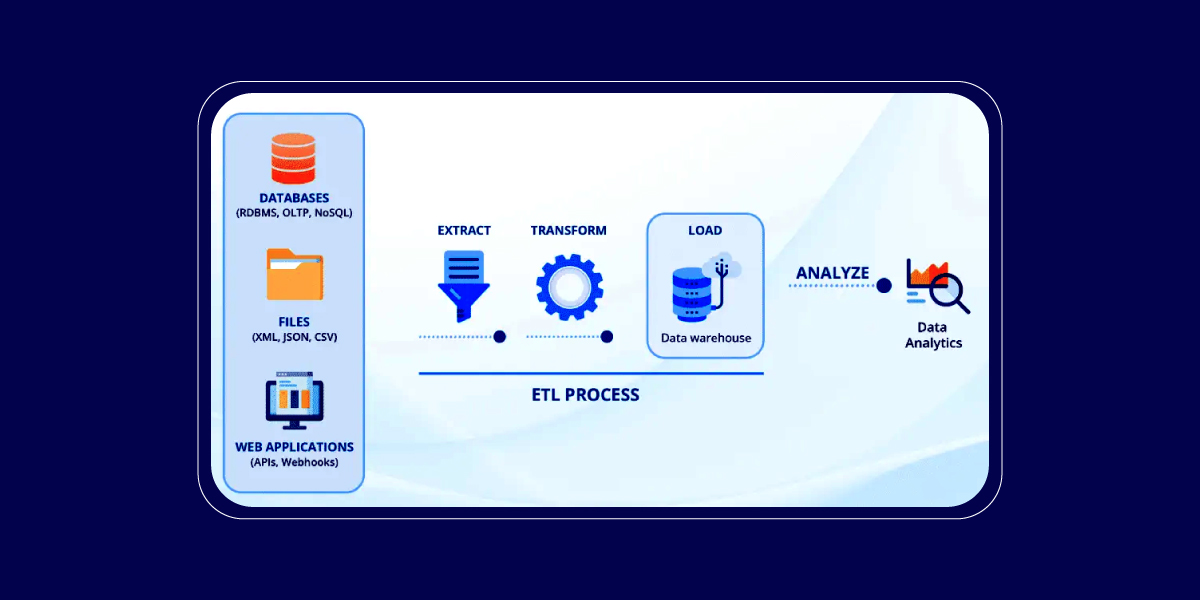
- Extraction: Raw data is collected and collated from various sources.
- Transformation: A secondary processing server is employed to structure and adapt the data to meet the structural requirements of the target database.
- Loading: The transformed data is loaded into the designated target database, ensuring it’s prepared and compliant before the move.
What is ELT?
With ELT, raw unstructured data is extracted from a source system and loaded onto a target system where you can refine it as and when needed. This extracted data is seamlessly integrated into the data warehouse during loading and made available to business intelligence platforms. ELT capitalizes on data warehousing for basic data transformations, such as eliminating and validating duplicate data. It is typically used for processing large amounts of unstructured data in real time. ELT can easily rearrange the phases because the raw data is stored in a data lake, which allows for instant loading and gradual transformation for analysis.
ELT Process
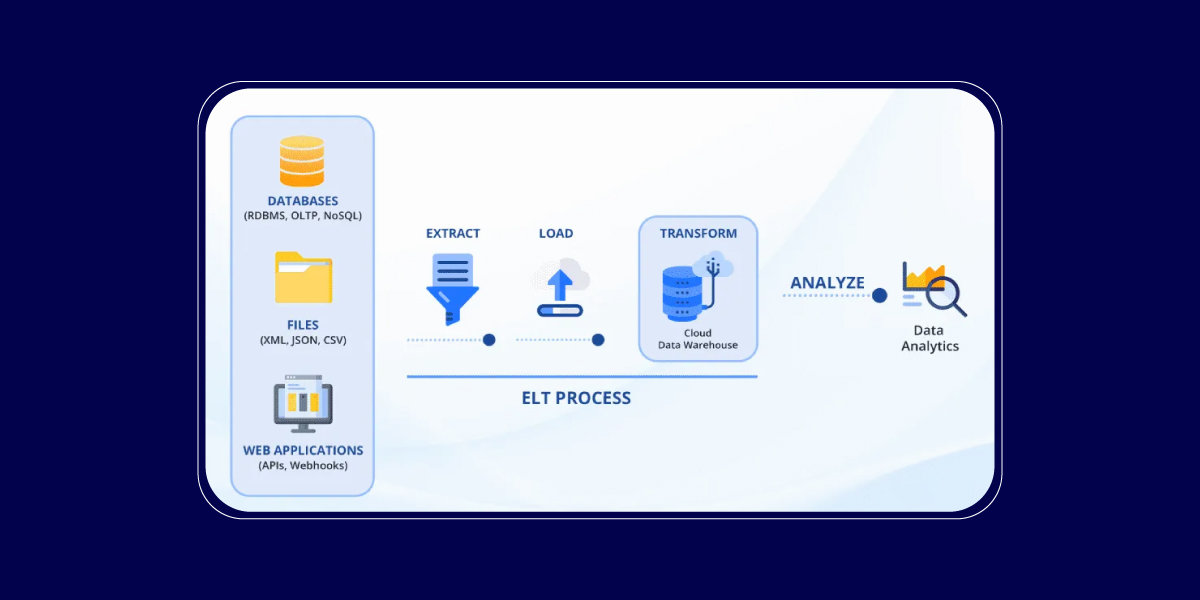
- Extraction: Raw data is extracted from different disparate sources.
- Loading: It’s loaded in its raw state into a data warehouse or data lake.
- Transformation: Necessary data transformations and enhancements are performed within the target system itself.
ELT Vs ETL Pros and Cons
ETL Pros
Fast Analysis
ETL’s structured data leads to quicker and more efficient data queries, facilitating faster analysis.
Flexibility of Environment
ETL can be implemented in both on-premise and cloud-based setups, making it adaptable to various organizational needs.
Compliance
ETL ensures data compliance by transforming sensitive data before it reaches the warehouse to align with data privacy regulations like GDPR.
Maturity
ETL was developed before ELT and has been in practice for over two decades. This means it is more widely adopted, and there is a larger pool of experienced ETL engineers skilled in leveraging ETL tools to build robust data pipelines.
ETL Cons
Loading Speed
As the transformation process occurs in a staging area, data availability in the target datastore is delayed compared to ELT.
Rigidity of Workflow
If the data warehouse structure doesn’t support new queries or analyses, adjustments to the transformation process and schema may become necessary.
Data Volume
ETL is apt for smaller datasets requiring intricate manipulation rather than handling large volumes of data, as transformation can be time-consuming.
ELT Pros
Adaptable Data Handling
ELT, especially when combined with a data lake, effortlessly accommodates large volumes of data in any format. Since ELT loads the raw data as it exists into the target system, you have access to raw data at your disposal, unlike in ETL, where the data is transformed before it is loaded into the data lake.
On-Demand Transformation
In the ELT model, data engineers can perform transformations on data either in batches or in real time. Thus, they need not pre-define all of the transformation in advance. They can use either SQL query engine or programming languages like Python and Java to perform complex transformations on data. This approach maximizes resource efficiency by skipping upfront, blanket transformations.
Data On-Demand
ELT ensures a continuous data flow to the data lake, making it perpetually accessible while eliminating the wait for transformations.
Swift Loading
Data gets loaded to the data lake as soon as it’s available, thanks to “at-rest” transformation. Immediate access to information is the name of the game.
Rapid Deployment
ELT’s as-needed transformation allows for speedy integration of new data sources into the data lake. Engineers can swiftly capture data while strategizing optimal ways to query and analyze it.
ELT Cons
Compliance Concerns
Regulatory constraints might forbid the storage of sensitive data, even if removal is planned in later transformations. Additionally, cloud-based ELT may clash with data residency regulations that restrict storing data outside specific regions or borders.
Emerging Approach
ELT has matured alongside the evolution of cloud computing, which means it lacks the extensive community support of ETL. Nonetheless, the ELT ecosystem is expanding steadily, attracting more tools and professionals.
Cloud-Centric Requirement
To unlock ELT’s full potential, it’s ideally paired with the cloud’s storage and processing capabilities. On-premise setups can’t fully harness its advantages.
Analysis Lag
As transformation occurs post-loading and before it can be analyzed, it can be a time-consuming process, especially for large, complex data sets. However, the computational muscle of cloud computing can mitigate this delay.
What is the Difference Between ETL and ELT
Here’s a side-by-side comparison of ETL and ELT to help you understand the distinctions between ETL and ELT processes more clearly and make informed decisions regarding their usage in various scenarios.
| Category | ETL | ELT |
| Definition | Data is extracted from a source system, processed on a secondary server, and loaded into a target system. | Data is extracted from a source, loaded onto a target system, and transformed inside the destination system. |
| Target System | The target system is typically a data warehouse or a relational database. | The target system is typically a data warehouse or data lake. |
| Transform | Raw data is transformed on a processing server. | Raw data is transformed inside the target system. |
| Load | Transformed data is loaded into a destination system. | Raw data is directly loaded onto the target system. |
| Speed | It is a time-intensive process; data is transformed before loading. | The process is faster; data is loaded directly into the destination system and transformed in parallel. |
| Code-Based Transformations | Transformation is performed on the secondary server. Suitable for compute-intensive transformations. | Transformation is performed in-databases. Simultaneous load & transformation offer speed & efficiency. |
| Maturity | ETL has been around for over 20 years. More tools and resources are available. Its protocols and practices are well documented. | It is a relatively newer data integration form with less documentation, tools, and resources. |
| Privacy | Pre-load transformation can eliminate PII (helps for HIPAA). ETL is better suited for compliances like GDPR, HIPAA, and CCPA standards | Direct loading requires more privacy safeguards. Since there are higher risks of data breaches, it is difficult to comply with GDPR, HIPAA, etc. |
| Maintenance | The secondary processing server adds to maintenance. | Fewer systems reduce the maintenance burden. |
| Costs | Separate servers can create cost issues. | Simplified data stack and costs less. |
| Data Lake Compatibility | There is no data lake compatibility. | Has data lake compatibility. |
| Data Output | Structured data output. | Structured, semi-structured, unstructured output. |
| Data Volume | It is the best fit for small data sets with complicated transformations. | It is ideal for large datasets that need speed and efficiency. |
ETL Use Cases
Whether in finance, healthcare, or retail, ETL’s automation and data transformation capabilities unlock the potential for improved efficiency and better-informed choices. Let’s explore its versatile applications:
Financial Services
Stock Market Analysis
Historical stock market data, while invaluable, can be overwhelming to analyze manually due to its sheer volume. ETL eliminates the time-consuming data collection and transformation processes, enabling the utilization of high-quality structured data to optimize investment strategies.
Financial Analysis and Reporting
Financial analysis often involves evaluating quarterly reports, multiple years’ worth of balance sheets, ROI assessments, and competitor performance comparisons. Manually sourcing data from various places can introduce ambiguity and increase the risk of errors. ETL automation simplifies the process, leading to better-informed financial decisions.
Industry Research
Easy access to data enhances decision-making in organizations, influencing market engagement, competitor analysis, and financial choices. ETL’s automation streamlines data extraction from diverse sources, facilitating the assessment of potential competitors and market conditions.
Healthcare
EHR Data Transformation
Electronic Health Records (EHR) data is a valuable resource for understanding patients’ health status. ETL is essential for exporting data from EHR systems and transforming it into a format compatible with target databases, enabling better patient care and decision-making.
Medical Data Analysis
Healthcare systems often deal with semi-structured or unstructured textual data that traditional databases struggle to handle. Textual ETL employs advanced semantics to decipher medical terms and extract meaningful insights, improving healthcare analysis.
Retail
Marketing Campaigns
Retailers use ETL to create a Single Source of Truth (SSOT) for customer data, enabling them to target specific customer segments effectively. Business Intelligence (BI) tools, combined with ETL, aid in identifying the most receptive audience for new product launches.
Streamlining Loyalty Schemes
E-commerce companies can expedite the approval process for loyalty programs using ETL. It assists in compiling lists of high-value customers, sending invitations automatically, and tracking eligibility criteria, ensuring the success of loyalty programs.
ELT Use Cases
In various industries, ELT (Extract, Load, Transform) emerges as a dynamic tool for extracting maximum value from data. Here’s how ELT finds industry-specific applications:
Marketing
ELT empowers marketers to examine customer behavior, preferences, and feedback across diverse channels—social media, email, web, or mobile. Marketers leverage this data to craft highly personalized campaigns, optimize conversion rates, and accurately gauge the return on investment (ROI).
Healthcare
ELT is vital for healthcare providers seeking to amalgamate data from electronic health records (EHRs), medical devices, laboratories, and pharmacies. This integration enhances patient care, curbs operational costs, and ensures compliance with stringent regulations governing the healthcare sector.
Finance
Financial institutions harness ELT to consolidate data spanning transactions, accounts, financial markets, and regulatory information. This consolidation equips them with robust tools for enhancing risk management, detecting fraud, and delivering exceptional customer service.
Retail
ELT is invaluable to retailers by facilitating seamless data collection from sales records, inventory management systems, suppliers, and customer interactions. This data-driven approach empowers retailers to optimize pricing strategies, streamline supply chain operations, and nurture customer loyalty.
When to Use ETL Vs ELT: A Strategic Decision
When making the crucial decision between ETL and ELT, you should weigh several key factors:
Data Volume
ELT is the best bet for organizations grappling with substantial data volumes. They can adopt the ETL approach and leverage the processing prowess of modern data platforms to deliver superior performance and scalability.
Data Quality Requirements
If impeccable data quality is paramount, ETL might be the preferred choice with robust data validation and cleansing steps. Nonetheless, organizations can incorporate data quality measures within an ELT process when needed.
Processing Requirements
ELT often emerges as the frontrunner for real-time or near-real-time data processing demands, enabling swifter data loading and transformation. ETL processes can be relatively slower due to the requirement to transform data before loading it into the target system.
System Compatibility
Organizations tied to legacy data warehouses or systems lacking in-system transformation capabilities may find ETL processes more fitting. In contrast, those embracing modern data platforms, such as data lakes or cloud-based data warehouses, can gain from ELT’s performance and scalability advantages.
Complex Analytics
ETL and ELT aren’t always opponents; they can synergize for complex analytics utilizing diverse data formats from various sources. Data scientists might employ ETL pipelines for some sources and ELT for others, optimizing analytics efficiency and enhancing app performance.
IoT Applications
Internet of Things (IoT) applications harnessing sensor data streams often lean towards ETL for several practical use cases:
- Conversion of data from different protocols into standard formats for cloud workloads.
- Filtering high-frequency data, conducting averaging functions, and loading processed values at a reduced rate.
- Calculation of values from disparate sources at the local device, followed by the transmission of filtered data to the cloud backend.
- Data cleansing, deduplication, or filling missing time series data elements.
In the ever-evolving data integration landscape, the choice between ETL and ELT should be strategic. The design of the data pipelines should be based more on the business requirements and real-time or batch requirements rather than just ETL or ELT.
ETL and ELT: How Rishabh Software Can Help You Take a Hybrid Approach
At Rishabh Software, we understand that navigating the complex terrain of data integration requires a strategic and agile mindset. Here’s how we can assist you in embracing a hybrid approach tailored to your unique needs:
Leveraging Legacy ETL Systems
If you have a legacy ETL system that continues to function seamlessly, we suggest leaving it in place. For new data warehousing ventures, we recommend exploring cloud-based solutions and cutting-edge ELT tools to harness the advantages of modern data processing.
Synergy of ETL and ELT
ETL and ELT tools can be combined in certain scenarios to achieve optimal results. For instance, an ELT tool can efficiently extract data from diverse source systems and store it in a data lake (e.g., Amazon S3 or Azure Blob Storage). Subsequently, an ETL process can step in, extracting, transforming, and loading the data into a data warehouse primed for comprehensive reporting.
Data and Analytics
Our data analytics services empower informed decision-making through data discovery, management, visualization, and analysis. We harness proprietary big data frameworks alongside open-source technologies like Apache Hadoop, Spark, Python, and Kafka. Our team crafts machine learning and deep learning algorithms, delivering a comprehensive toolkit for storing, processing, and analyzing vast datasets. Our strategic partnerships with AWS and Azure enable us to provide cloud platform analytics solutions spanning the data lifecycle.
As your data analytics development partner, we assist you in establishing a robust digital data ecosystem. We’ve got you covered, from data lakes and data warehouses to OLAP (online analytical processing), reporting, dashboarding, and more. We employ modern ETL and ELT techniques to transform complex corporate data from diverse sources into actionable insights.
Our Microsoft Gold Data Analytics competency grants you easy access to the Microsoft ecosystem, including tools, programs, and on-demand tech support for seamless project delivery and deployment.
Rishabh Software is your trusted ally in navigating the evolving data landscape, unlocking the potential of your data for informed decision-making and growth.
FAQs
Q: What is the difference between the ETL and ELT stack?
A: An ETL stack includes three components:
- Extraction tool
- Transformation tool
- Loading tool
An ELT stack also has three components:
- An Extraction tool,
- A tool for loading raw data into destinations like cloud-based warehouses or data lakes
- A transformation tool that processes data within the target source.
Q: Are there any performance differences between ETL and ELT?
A: Yes, there are performance differences. ETL usually takes more time and resources for data transformation before loading, potentially leading to slower loading, higher costs, and lower data quality. ELT loads raw data faster with lower cost and better data quality but requires more storage and computing power for post-loading transformations.
Q: ETL vs ELT, which is better?
A: There’s no definitive answer. The choice depends on your specific data needs, source types, target capabilities, business objectives, and budget. Consider a hybrid approach that combines both methods for optimal results.
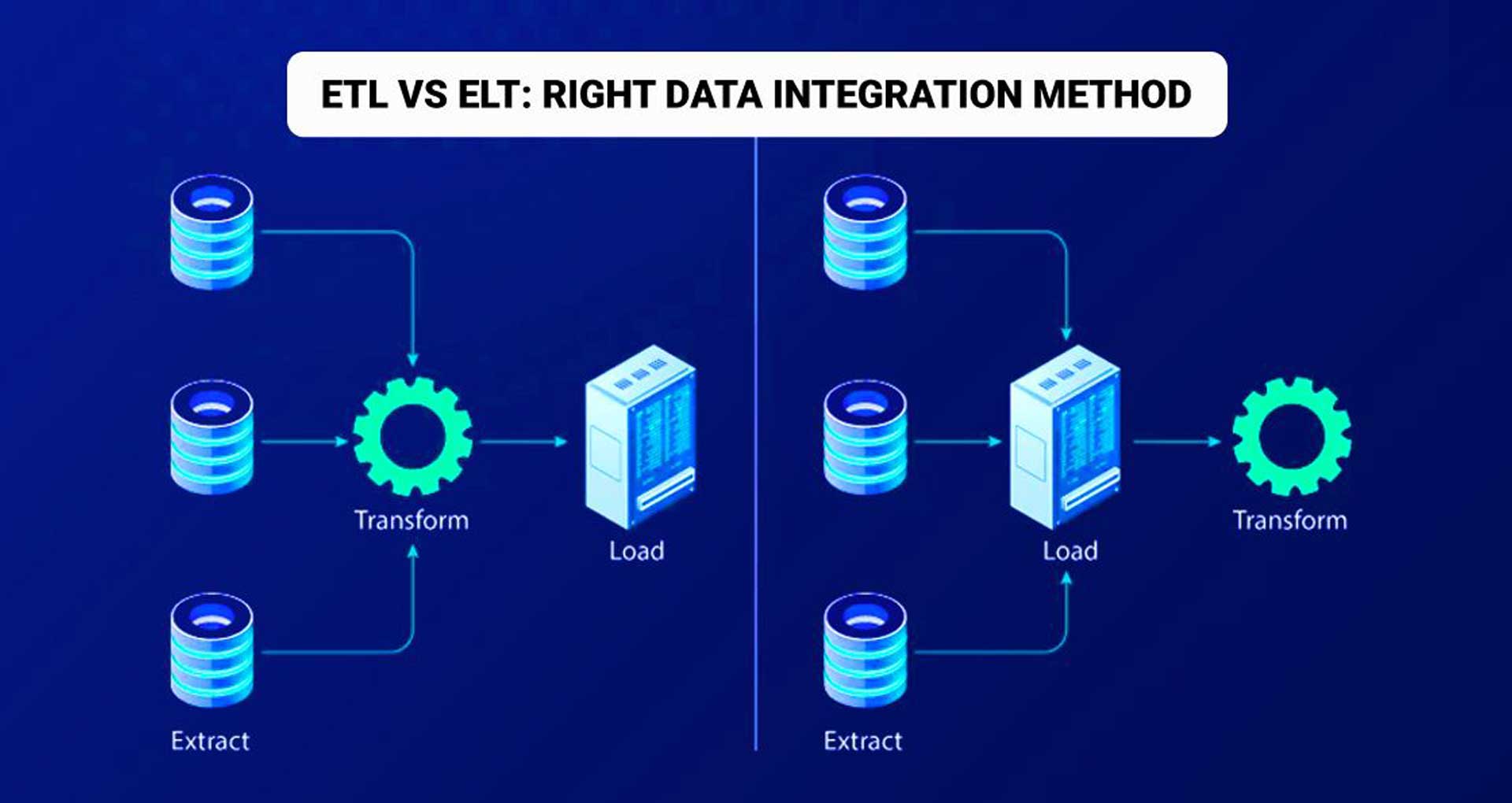






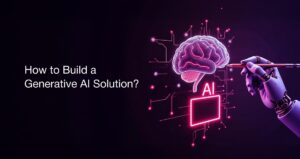
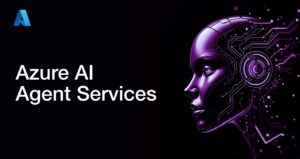


 30 Min
30 Min


